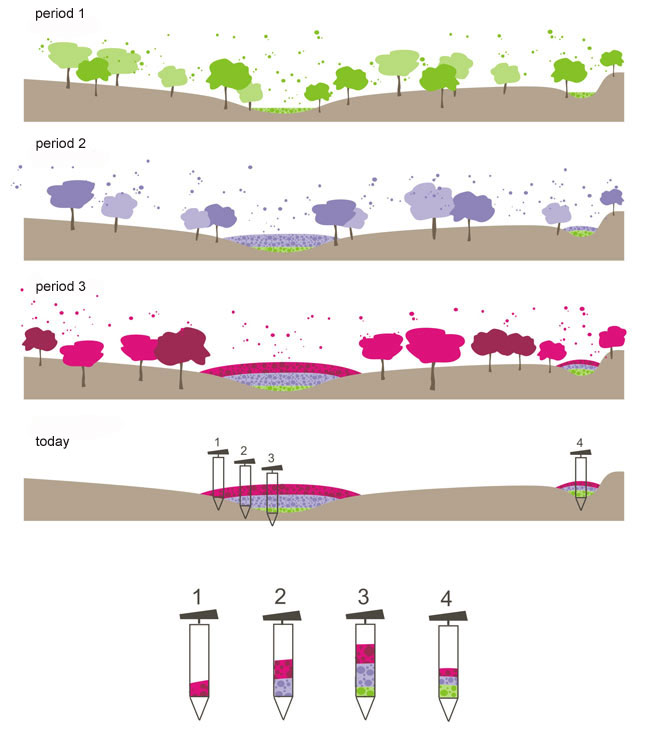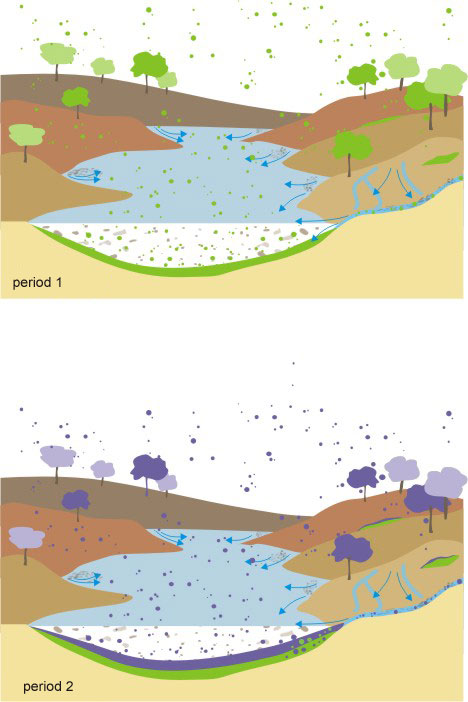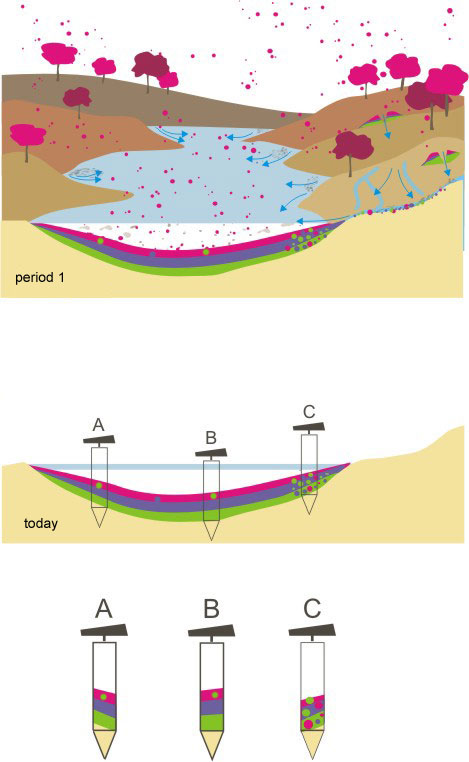Which are the deposits containing fossil spores and pollens ?
Pollens fall everywhere: on forest soils, in fields, on the ground of towns,... But most of them soon disappear, ingested by invertebrates or degraded by microorganisms (bacteria, fungi) that decompose organic matter.
The preservation of pollens as archives of vegetation history requires very strict conditions :
- fossilization conditions: the environment needs to be unfavourable to microorganisms: either acidic, either anaerobic (oxygen-free)
- sedimentation conditions: the sediment that captures pollens needs to keep a chronology of the deposit; which means a progressive accumulation and no subsequent disturbance
Two main types of deposits meet these requirements:
Note: other environments allow pollen preservation, and may be studied for other purposes.
- Old rocks: very old spores and pollens were found in rocks, and make possible to study vegetal species now disappeared.
- Aeolian silts (loess): during cold periods (more than 15000 years ago), silts were carried by wind and formed deposits, sometimes up to more than 100 m thick. These deposits contain pollens, but their analysis and interpretation are more difficult than in bog or lake sediments, because of aerobic conditions and of disturbances after the deposition.
Fossil spores and pollens in peat deposits.Make experiment
Summary without experimentation
The above diagrams should help you answer the following questions
Fossil spores and pollens in lacustrine sediments.Make experiment
Summary without experimentation
The above diagrams should help you answer the following questions



